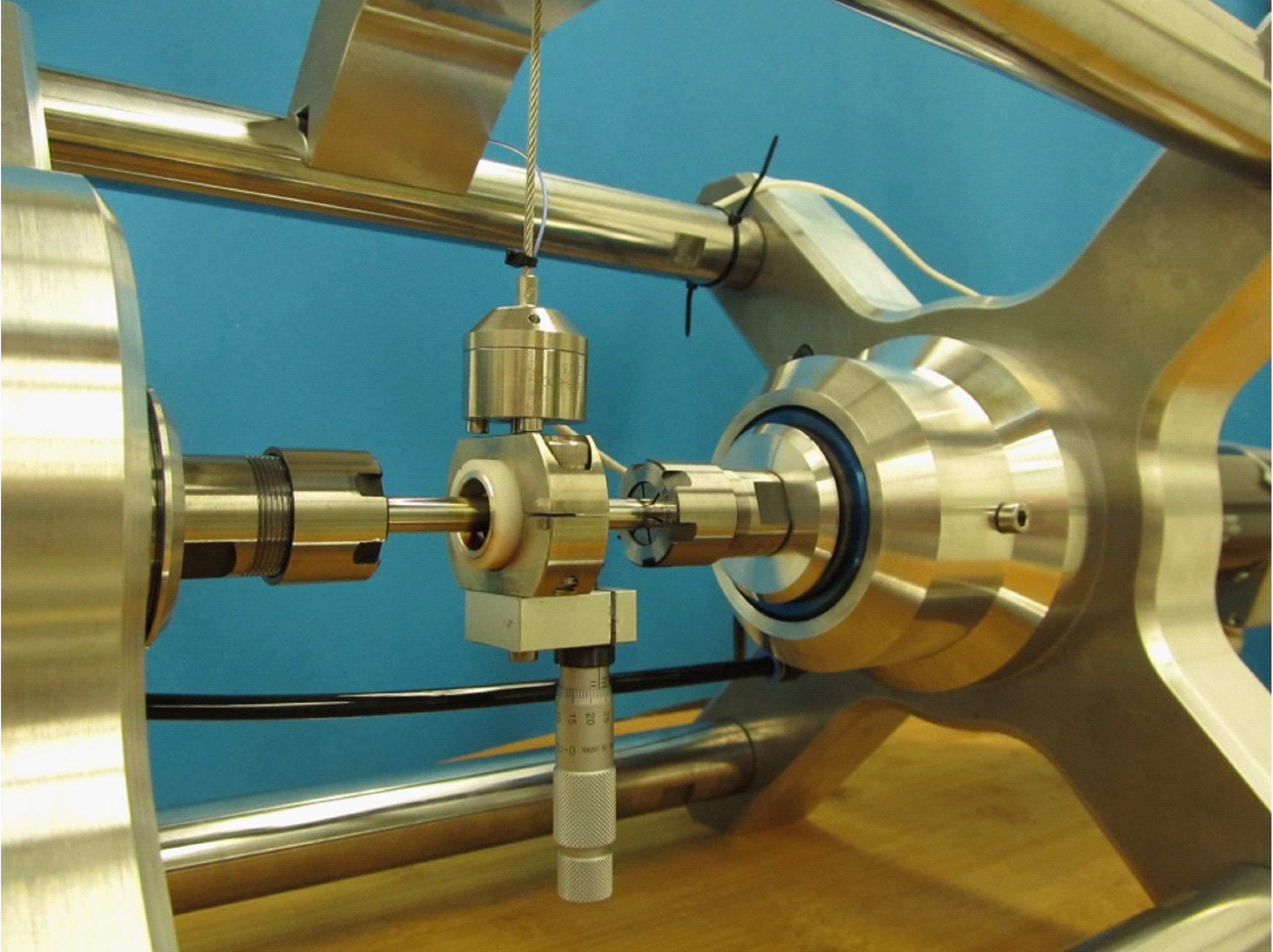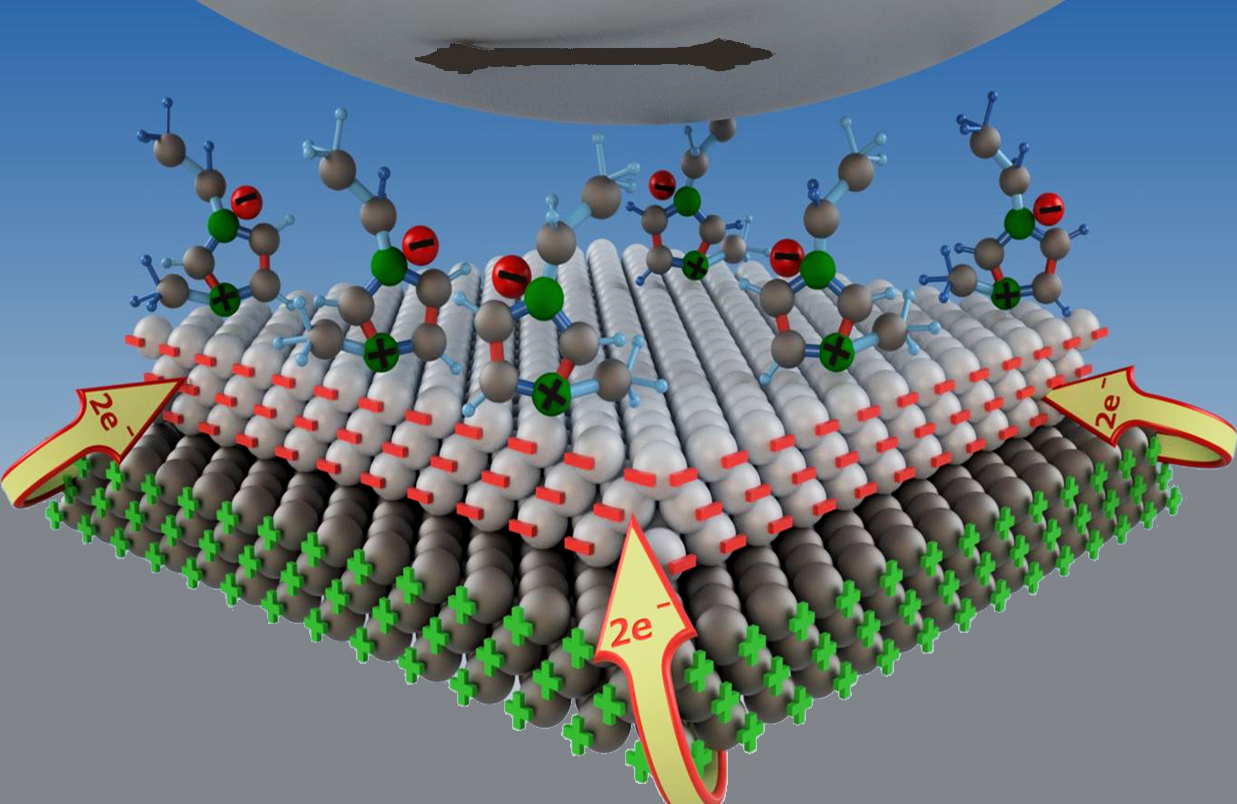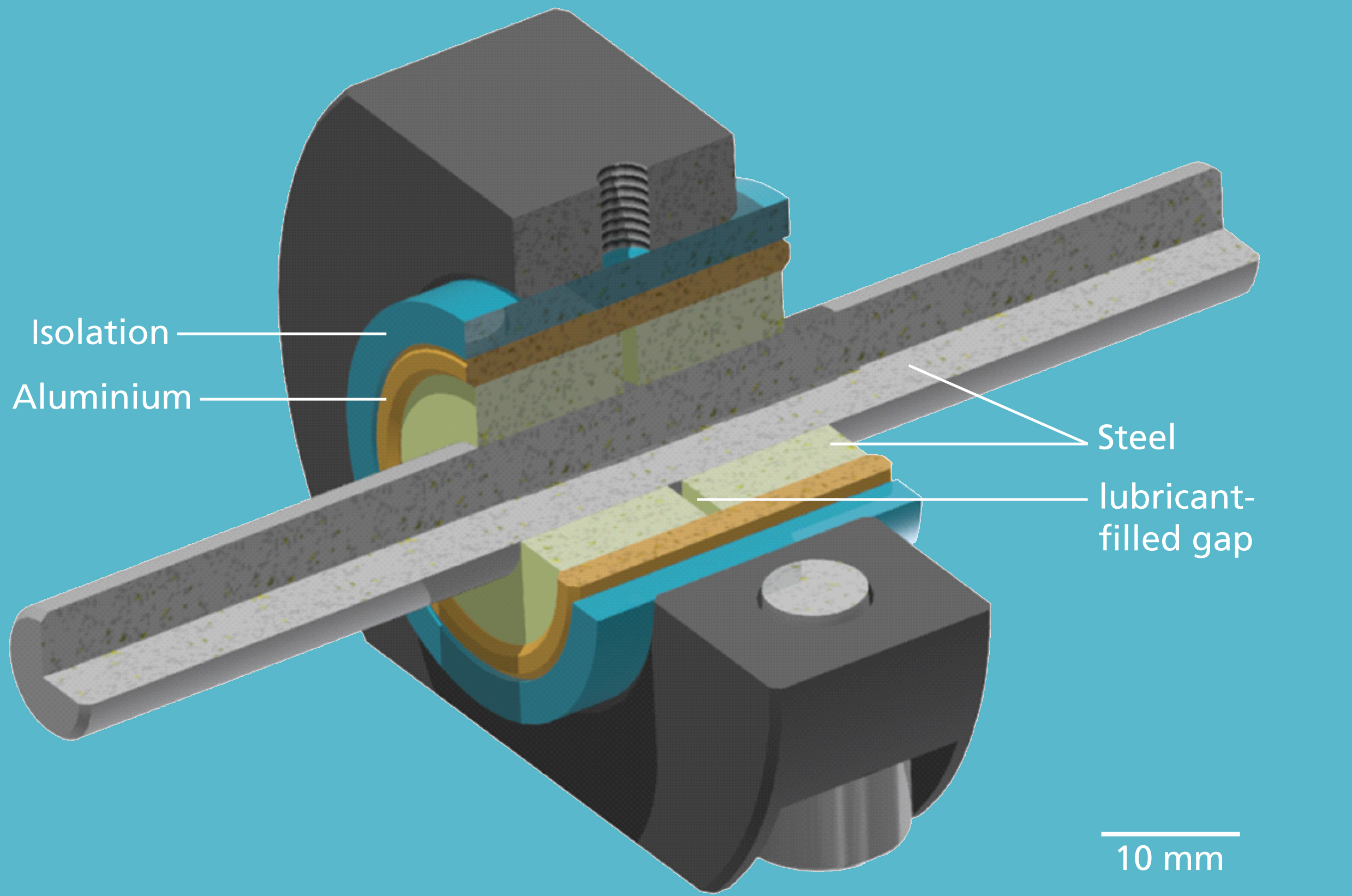
Until now, machine bearings have mainly been lubricated with oil-based mineral lubricants. Water-based lubricants can effectively reduce friction and material wear and, depending on the additives used, represent a long term environmentally friendly alternative - after all, water is less viscous than oil. The energy consumption of the machines and the frequency of maintenance could thus be reduced. However, the disadvantages of water are: the limited operating temperature range and the corrosion of the bearing metal parts. The latter being the main reason it has not previously been used as a lubricant. The Fraunhofer IWM has used additives to modify water so that it could actually be used as a lubricant in the future. The corrosion of the metal components is prevented by galvanic coupling, providing an electric charge from within, which alleviates the need for electricity needing to be externally applied.
For this reason, the group Wear Protection and Advanced Ceramics has developed an in situ tribometer that measures wear and friction values during the operation of many slide bearings. The measurements enable continuous monitoring of bearings and can be carried out quickly to avoid frequent rebuilds.
 Fraunhofer Institute for Mechanics of Materials IWM
Fraunhofer Institute for Mechanics of Materials IWM
